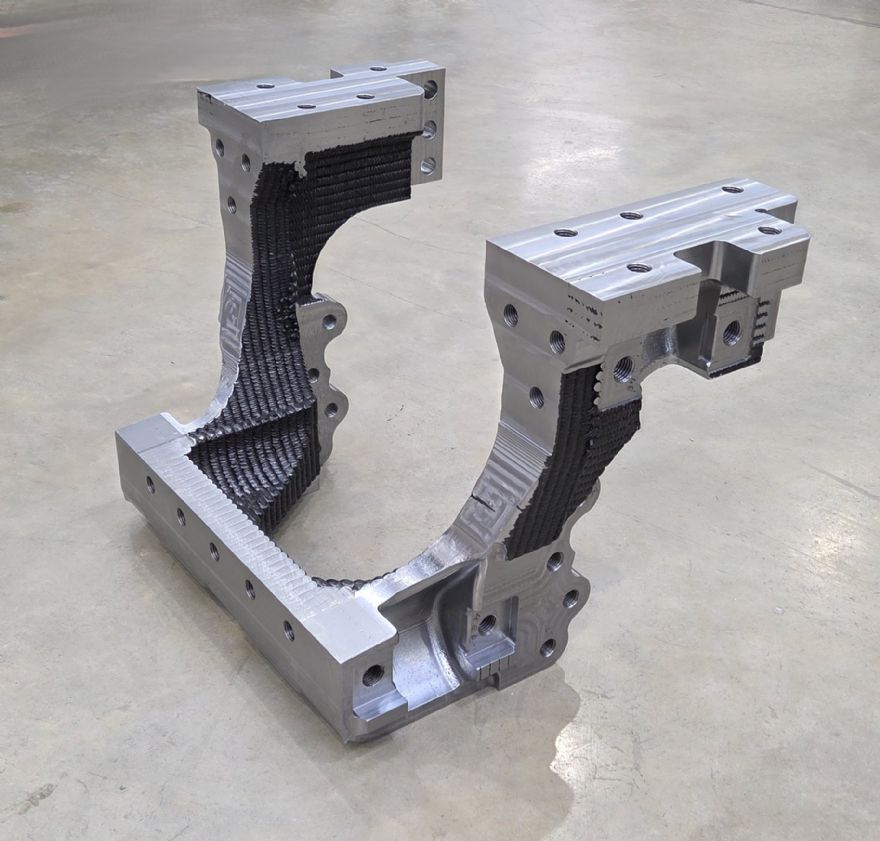
The
Digital Manufacturing Centre (DMC) — based in Towcester and a leading production facility with an additive manufacturing (AM) engineering research and development centre — recently delivered the largest AM metal component the DMC has worked on to date. Produced as part of Project TAMPA (the MoD’s AM as a Service Challenge), the substantial Mastiff suspension and differential carrier was 3-D printed for
NP Aerospace (Mastiff is a heavily armoured 6 x six-wheel-drive patrol vehicle). The part was displayed on NP Aerospace’s stand at the recent
DSEi 25 exhibition in London.
The large and complex 3-D printed metal structural component, which would fit within a 500mm cube, was manufactured using wire-arc directed energy deposition (wire-arc DED) and weighed in at 90kg; and while AM is usually associated with complex geometries and lightweighting, for the ‘TAMPA Spiral 2’ part the requirement was to prove AM could deliver large structural components that would traditionally have been produced using casting, forging or fabrication techniques.
There was no requirement for DMC to redesign to reduce weight or improve performance, in fact, it was critical that the existing performance criteria could be replicated with AM. In this instance, the key advantages of using AM were zero tooling and a lead time of weeks instead of 6-9 months.
‘Spiral activities’Furthermore, the DED AM process design could potentially help NP Aerospace complete the rapid development of ‘Spiral activities’ for future platforms. Indeed, DCM said: “With additional redesign, other benefits such as lightweighting could be achieved, which would reduce the total mass of the vehicle, allowing other key capabilities — such as cargo capacity, mobility, or protection — to be increased.”
David Wilson, NP Aerospace’s director of engineering, added: “As a key partner on UK MoD projects it is important we advance technology that has very real benefits in the field. By working with DMC on TAMPA Spiral 2 we demonstrated significant platform availability improvements and reduced lead times and costs on part replacement. The component we have developed for Mastiff is safety critical and uses direct energy deposition technology, which also has the ability to repair existing parts that can then be re-machined to extend their life.”
Kieron Salter, DMC’s founder and CEO, said: “At DMC we are very pleased to have been involved with Project TAMPA from the outset, to help the UK’s MoD better understand the capabilities, potential, and benefits that using AM can bring to the defence supply chain. In partnership with NP Aerospace, we have successfully proven the AM engineering outputs required for both Spiral 1 and Spiral 2.”